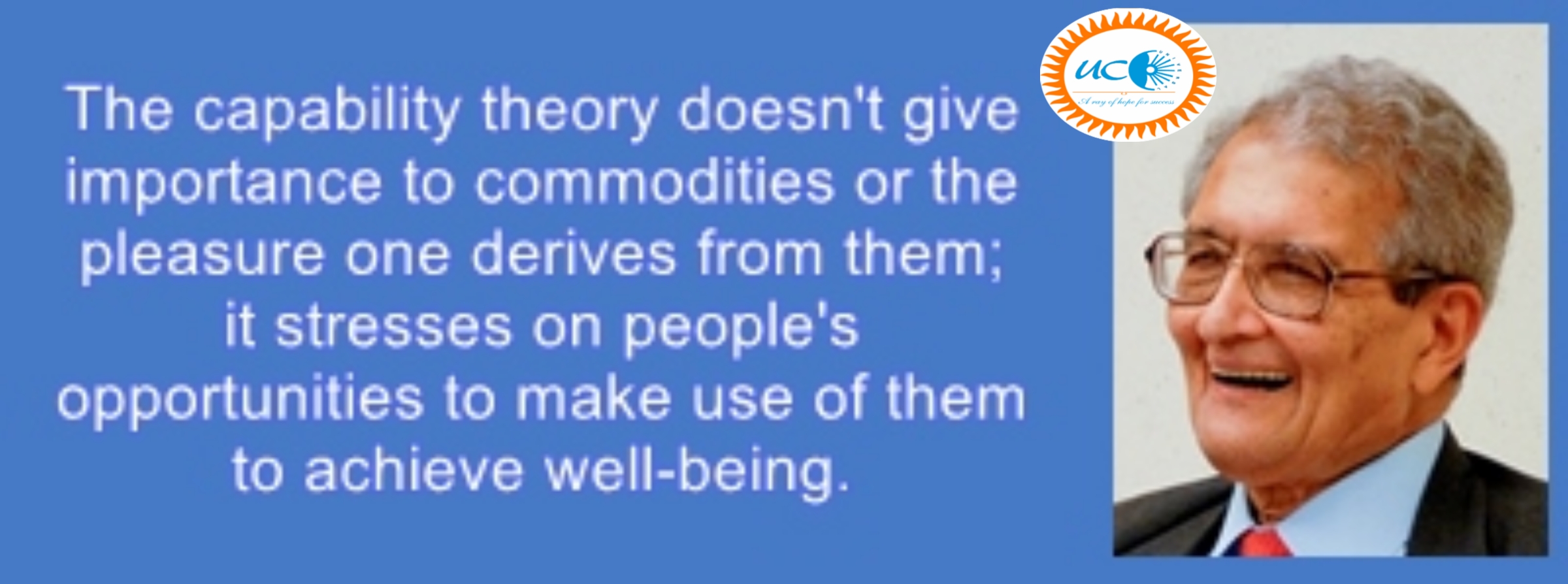What do you understand by Amartya Sen’s ‘capability approach’? Analyse its significance in understanding social realities and in making a pro poor development strategy
Giving bicycles to poor girls can a means to encourage them to go to school. But what good is a bicycle for a person who cannot see . Development economists have debated about how to judge the progress of a nation. Per capita income may be high, but inequality may be pervasive. People may be wealthy but they may not be happy. In this debate, Amartya Sen proposed the ‘capability approach’ to measure the progress of a country. A capability is defined as the measure of people’s freedom to pursue and achieve goals which they would like to. These are the goals that they deeply value, for e.e. education is necessary to be employable, hence people would like to be educated. So whether the society allows them to be educated or not will determine how much progress the society is making. Capability approach was proposed as a practical theory to remove injustices in particular instances against the prevailing theories of universalising justice, such as utilitarianism or resourcism.
In his ‘capability’ theory, he defines capability as ‘the ability to fulfil one’s own will’ i.e. the ‘freedom to choose’ must be associated with ‘capability to choose’. It particularly identifies specific incapacities which hinder justice for all. For example, people in remotest regions face incapacity of transportation; women face the incapacity because of social norms etc. The approach is ‘ capability enhancement of the people ” as the main plank of the strategy to bring about inclusive development and hence to reduce inequality.
In this way, the approach focuses on the quality of life of individuals in terms of ‘functionings’ and ‘capability’. ‘Functionings’ are states of ‘being and doing’, such as: being well nourished and healthy, having adequate shelter etc. Capability refers to a set of valuable functionings that a person has effective access to. Thus, a person’s capability represents his/her effective freedom to choose a life that he/she has reason to value.
This approach addresses various dimensions such as individual physiology, political and economic freedom, social factors, local environment conditions, differences in access to resources etc. therefore it helps us understand the existing social realities, especially in a developing country like India where different sections of population face different issues. Further its significance in understanding social realities and in making a pro poor development strategy lies in:
- It puts people at the focus of development and aims at expanding their capabilities as per their social reality.
- It supplements the GDP model of development and simultaneously points out its shortcomings as a sole measure of economic progress.
- It centres the growth and development debate around ‘development of the individual’. .
- Several indices have been created based on the approach such as HDI, Gender Inequality Index, Gender-Related Development Index etc.
The approach is also significant in making a pro-poor development strategy as it explains poverty as a result of capability deprivation and states that government should emphasize on social sector expenditure such education, health etc. to improve the capabilities of poor people.





